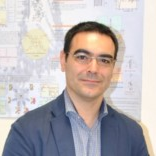Porphyrin and Biomolecules: A Long-Lasting Friendship
A special issue of International Journal of Molecular Sciences (ISSN 1422-0067). This special issue belongs to the section "Physical Chemistry and Chemical Physics".
Deadline for manuscript submissions: closed (31 July 2023) | Viewed by 6360
Special Issue Editors
Interests: supramolecular chemistry related to porphyrin self-assembly and chirality; design of chiroptical probes for biomolecules conformations
Special Issues, Collections and Topics in MDPI journals
Interests: supramolecular chemistry; chirality; circular dichroism; porphyrinoids; conformational probe; host-guest chemistry
Interests: supramolecular chemistry; spectroscopic investigations (UV/Vis, circular dichroism, fluorescence, RLS); porphyrin self-assembly and chiroptical properties; polypeptides; calixarenes; bio-inspired adhesives; hybrid nanomaterials; supramolecular materials
Special Issue Information
Dear Colleagues,
Porphyrins and related macrocycles are fascinating compounds widely employed in supramolecular chemistry as a paradigm to imitate self-assembly in natural systems, i.e., enzymatic reactions, assembling of multiprotein complexes, conformational changes, and many other processes driven by non-covalent interactions. Moreover, their synthetic versatility along with tunable physico-chemical properties has led to significant advances in the field of molecular recognition and conformational probes for numerous biomolecules (amino acids, peptides, DNAs, RNAs, etc.). Nevertheless, the understanding of the spontaneous porphyrin self-assembly through biomolecules offers tremendous potentialities to obtain a wide variety of complex systems, having specific functions and properties.
The aim of the Special Issue “Porphyrin and Biomolecules: A Long-Lasting Friendship” is to explore the more recent advances on the covalent and non-covalent interactions between porphyrins or related macrocycles and biomolecules.
This Special Issue welcomes interdisciplinary original research papers or comprehensive reviews focusing on the wide versatility of the supramolecular interactions between porphyrinoids and biomolecules for potential applications as sensors, conformational probes and in the field of nanomedicine and biotechnology. A paper highlighting the spectroscopic and chiral outcomes of building supramolecular systems or chiroptical probes will also be covered in this Issue.
Dr. Alessandro D'Urso
Prof. Dr. Roberto Purrello
Dr. Massimiliano Gaeta
Guest Editors
Manuscript Submission Information
Manuscripts should be submitted online at www.mdpi.com by registering and logging in to this website. Once you are registered, click here to go to the submission form. Manuscripts can be submitted until the deadline. All submissions that pass pre-check are peer-reviewed. Accepted papers will be published continuously in the journal (as soon as accepted) and will be listed together on the special issue website. Research articles, review articles as well as short communications are invited. For planned papers, a title and short abstract (about 100 words) can be sent to the Editorial Office for announcement on this website.
Submitted manuscripts should not have been published previously, nor be under consideration for publication elsewhere (except conference proceedings papers). All manuscripts are thoroughly refereed through a single-blind peer-review process. A guide for authors and other relevant information for submission of manuscripts is available on the Instructions for Authors page. International Journal of Molecular Sciences is an international peer-reviewed open access semimonthly journal published by MDPI.
Please visit the Instructions for Authors page before submitting a manuscript. There is an Article Processing Charge (APC) for publication in this open access journal. For details about the APC please see here. Submitted papers should be well formatted and use good English. Authors may use MDPI's English editing service prior to publication or during author revisions.
Keywords
- conformational probes
- chiroptical sensor
- porphyrinoids
- supramolecular chemistry
- biomolecules conformations
- self-organization
- nanomedicine
- biotechnology








